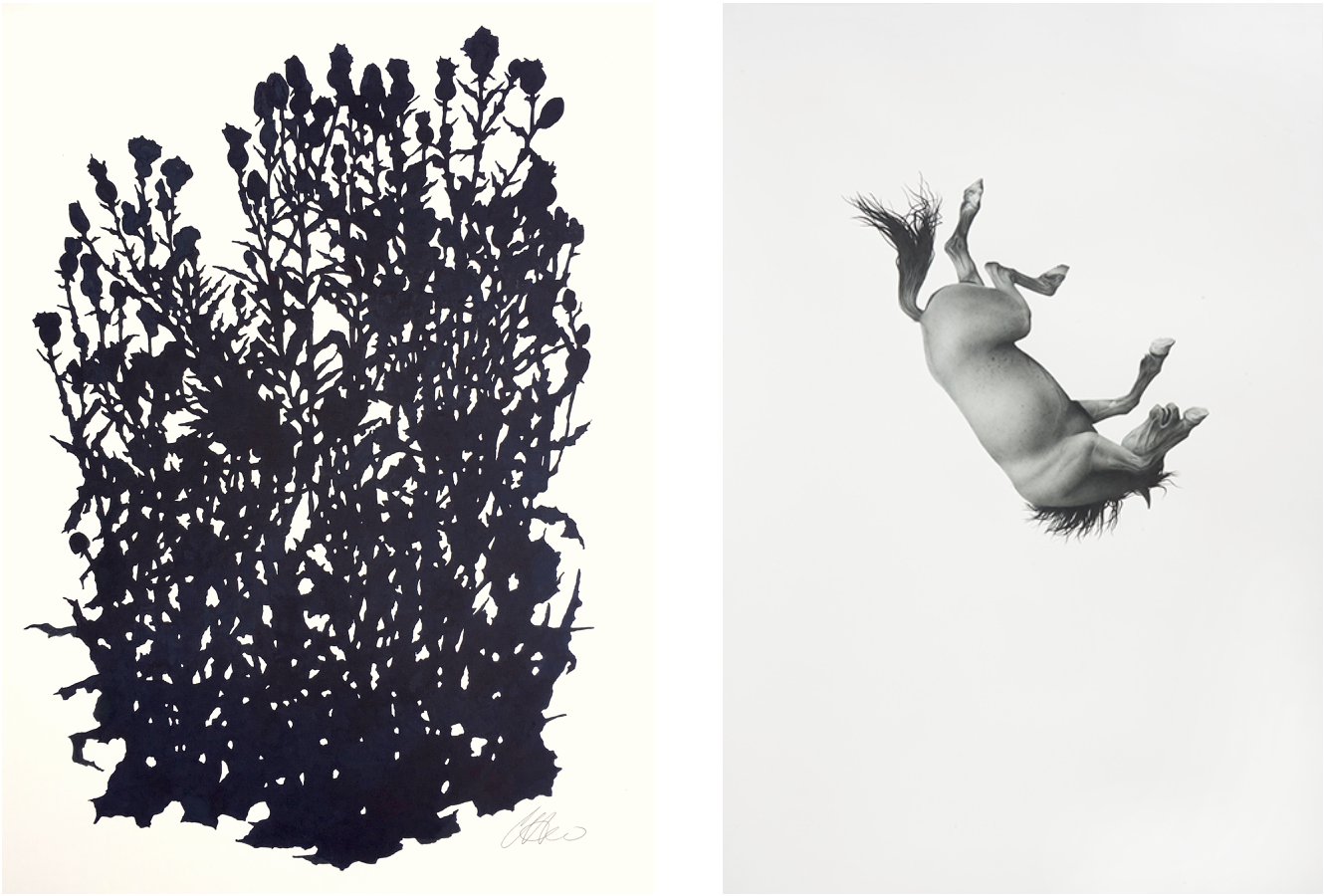Vantage Point: Works by Antonio Marra by Shoshi Rosen
Italian-born painter Antonio Marra’s artworks are a stunning display of color and geometry. Deep, meticulous streaks of vibrant blues, purples, yellows, and greens slash across his canvases to form phantasmagorias of shape and color. With a unique multi-perspective technique, Marra carves layers of vibrant, animated patterns into his abstracted paintings.
Marra’s paintings are instantly striking, but they grow increasingly more enchanting with prolonged visual engagement. As viewers peer at the canvases from different angles, the images begin to shift and change. In fact, the paintings each display a triptych of perspectives, which unfold and alternate as viewers circle the paintings. Standing before Marra’s artworks, a beautiful, endlessly spiraling kaleidoscope comes to mind – and the longer one looks, the harder it becomes to look away.
In order to fully experience Marra’s paintings, movement is obligatory. Access to the many overlaid colors and patterns embedded in the artworks is contingent on the path of the viewer as they pace before the paintings. Certainly, no two sets of eyes will experience these masterpieces the same way. As viewers map their paths in front of the artworks, they concurrently map a unique pattern of dynamic, morphing colors and shapes. The effect is both mesmerizing and playful, not unlike a handheld kaleidoscope.
Left; Alexa, Be Quiet, acrylic on canvas, 39.4 x 39.4 inches
Right The Lust and the Burden of the Painter, acrylic on canvas, 47.2 x 39.4 inches
Marra’s two paintings in Weinberger Fine Art, “Alexa, be Quiet” and “The Lust and Burden of the Painter” are thus highly individualized artworks. They are as much characterized by streaks of color on canvas as they are by the unique movements of their viewers. The artist does not fashion a singular visual experience, but rather encourages viewers to forge their own. For Marra, reality is subjective, multi-dimensional, and in a state of constant fluctuation.
Circling “Alexa, be Quiet,” a drastic contrast in color and pattern materializes. From the left, the painting appears to be composed of many interlaced triangles of vibrant neon yellows, reds, purples, and greens. Straight on, the bright colors pale to an array of pastel sherbets, teals, and periwinkles. From the far right perspective, the colors give way almost entirely; only white, black, and pale blue are visible, and the complex pattern of interlaced triangles simplifies to a few large shapes. The emergent difference between the three perspectives is captivating and extraordinary.
Antonio Marra’s painted kaleidoscope concept fosters highly individual experiences and compels multiple, extended viewings. The paintings embrace orphism’s spiraling vortexes of color, optical art’s hypnotic illusions, and geometric abstraction’s mathematical precision. They are at once delightfully simple and beguilingly complex, brazenly forthright and mysteriously secretive. Marra’s artwork requires active, dynamic, and extensive viewership.













